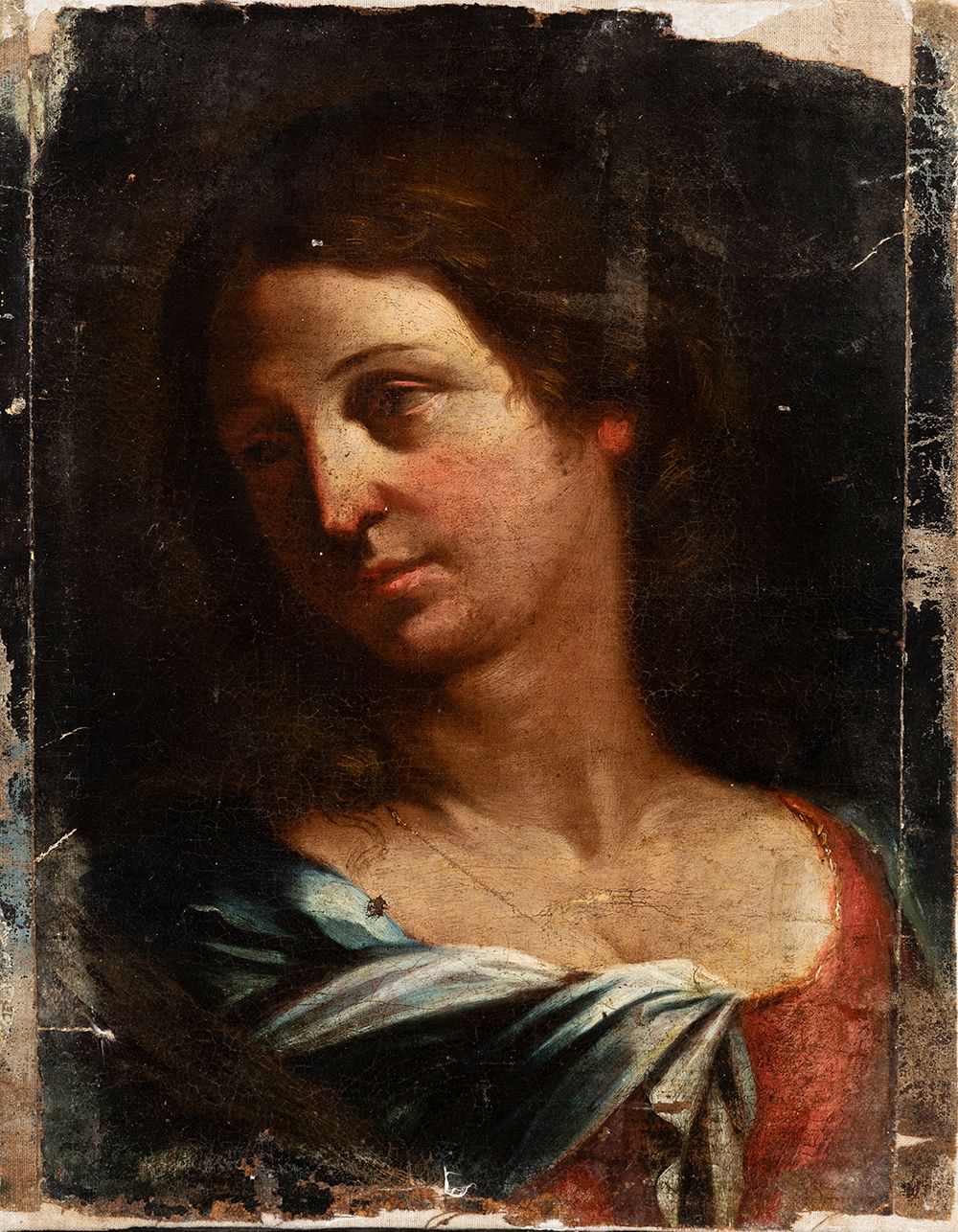Description
Circle of GIOVANNI FRANCESCO BARBIERI "IL GUERCINO" (Italy, 1591-1666)
Circle of GIOVANNI FRANCESCO BARBIERI "IL GUERCINO" (Italy, 1591-1666) "Saint". Oil on canvas. Relined. It presents faults and additions on the sides. Measurements: 48 x 38 cm. In spite of the few iconographic references that exist in this female portrait, due to the features of the woman, the clothes, and even the position of her face, it is very probable that it is a religious representation. Probably a martyr saint, or even a fragment of the Good Samaritan woman. A character described in the Bible by Saint John (4: 4-26) and which has a long tradition in art, due to the text's allusions to water as "Divine Grace" or "Living Water", due to the veiled allusion to preaching and evangelisation in the text. The work has similarities with the aesthetic circle of Guercino, who was one of the most acclaimed Italian artists of the first half of the 17th century. He was born in the village of Cento in the province of Ferrara. The principal influences that shaped his style were the Bolognese Ludovico Carracci, his cousin Hannibal Carracci and the Ferrara-born Ippolito Scarsella. Apart from a two-year stay in Rome during the papacy of the Bolognese Gregorio XV Ludovisi, he was active in his native town until 1642 when he moved to neighbouring Bologna. He was about twenty-five years old when he came to the attention of his first important clients, among them Cardinal Alessandro Ludovisi, Archbishop of Bologna; Cardinal Jacopo Serra, papal legate in Ferrara; Grand Duke Cosimo II of Tuscany and Duke Ferdinand Gonzaga of Mantua. By the mid-1620s he had turned down invitations to work outside Italy, from Charles I of England among others. He seems to have been reluctant to enter into direct competition with his Bolognese rivals, especially Guido Reni, who from around 1610 was the most celebrated painter in Italy. Most of his abundant output consists of altarpieces and easel paintings, but in the first half of his career he also painted frescoes in Cento, Bologna, Rome (the Aurora on the ceiling of the Casino Ludovisi) and the cathedral of Piacenza (1626-1627). His early "Tenebrist" style is characterised by dramatic lighting, saturated colours and agitated compositions. His stay in Rome led him to gradually modify his style towards a much more idealised and classical language, with calmer and more structured compositions, more elegant contours, a generally lighter palette and richer pastel tones.
14
Circle of GIOVANNI FRANCESCO BARBIERI "IL GUERCINO" (Italy, 1591-1666)
